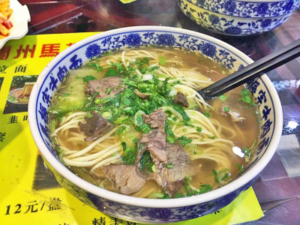This is the second part in the series “From the Middle East to the Middle Kingdom”—which is drawn from the leading ethnographic course helping Christians better understand China’s Hui Muslims. Part 1 provided a series overview. We will now summarize the formation of the Hui as a people over time. The course presents Hui history in seven stages:
- Fanke Come to Town (AD 651–1270)
- Mass Migration under the Khan (AD 1271–1367)
- Forced Integration (AD 1368–1644)
- Hui Uprisings (AD 1645–1912)
- Bandits and Warlords (AD 1913–1949)
- Communist China (AD 1949–1977)
- Reforms and Globalization (AD 1978–present)
As we will see, each stage of Hui history has significant implications for gospel ministry among the Hui because each stage has shaped the Hui people’s foundational worldview.
Fanke Come to Town (AD 651–1270)
Silk Road, Muslim traders, intermarriage, and there you have it—the Hui. It’s the most touted part of Hui history.
Indeed, some traits of today’s Hui stem from their early origins: their Islamic faith and penchant for small business, for example. But the Hui are much more than Chinese Muslim traders. In this series, we will touch on how every period from the 7th century to the 21st has shaped this complicated group of people who are loved by God.
Islam arrived in China even before Mohammed died in AD 632. By 651, China was receiving numerous traders from Persia and West Asia along the overland Silk Road and the ocean Spice Route. Some traders were Nestorian Christians, some were Zoroastrians, and others were Muslims. Together they were dubbed Fanke (番客). This was the Tang Dynasty (AD 618–907) an era when China was an icon of power, prosperity, and prestige, with an economy estimated at 58% of global GDP.
Fanke lived in assigned districts with some freedom to govern their own civil affairs and practice their religions. They were allowed to marry Chinese women, but proselyting was forbidden. Chinese wives could convert to Islam and, in the patriarchal society, children received their fathers’ ethnoreligious identities. As many as 150,000 foreigners may have lived in trade cities such as Guangzhou, Quanzhou, and Xi’an. The famous Hui Quarter in Xi’an arose this way. As foreigners gathered into their own ethnic and cultural groups, the Hui people gradually formed. The Hui descended from those foreigners and their Chinese-born children who followed Islam but did not gather into a particular non-Chinese group. Unlike some other Muslim people groups, for example, Uyghurs, Islam has been instrumental in shaping the Hui identity since its beginning.
From the earliest period of Hui history, we encounter the foundations of Hui identity and lifestyle. A large percentage of Hui today still earn a living through trade and small business. To survive in China and maintain their limited freedoms of religion and self-governance, they have learned not to upset the status quo. The primary position of Islam as the symbol of their identity as a people can be a significant challenge for Hui who encounter Jesus.
Image credit: Julie Ma.

Julie Ma
Julie Ma (pseudonym) is a graduate of Sydney Missionary and Bible College (SMBC) and a member of the Angelina Noble Centre for women in cross-cultural missions research. She left her home in Australia over a decade ago to serve Hui Chinese Muslims alongside her Chinese husband. After all these years overseas, …View Full Bio
Are you enjoying a cup of good coffee or fragrant tea while reading the latest ChinaSource post? Consider donating the cost of that “cuppa” to support our content so we can continue to serve you with the latest on Christianity in China.